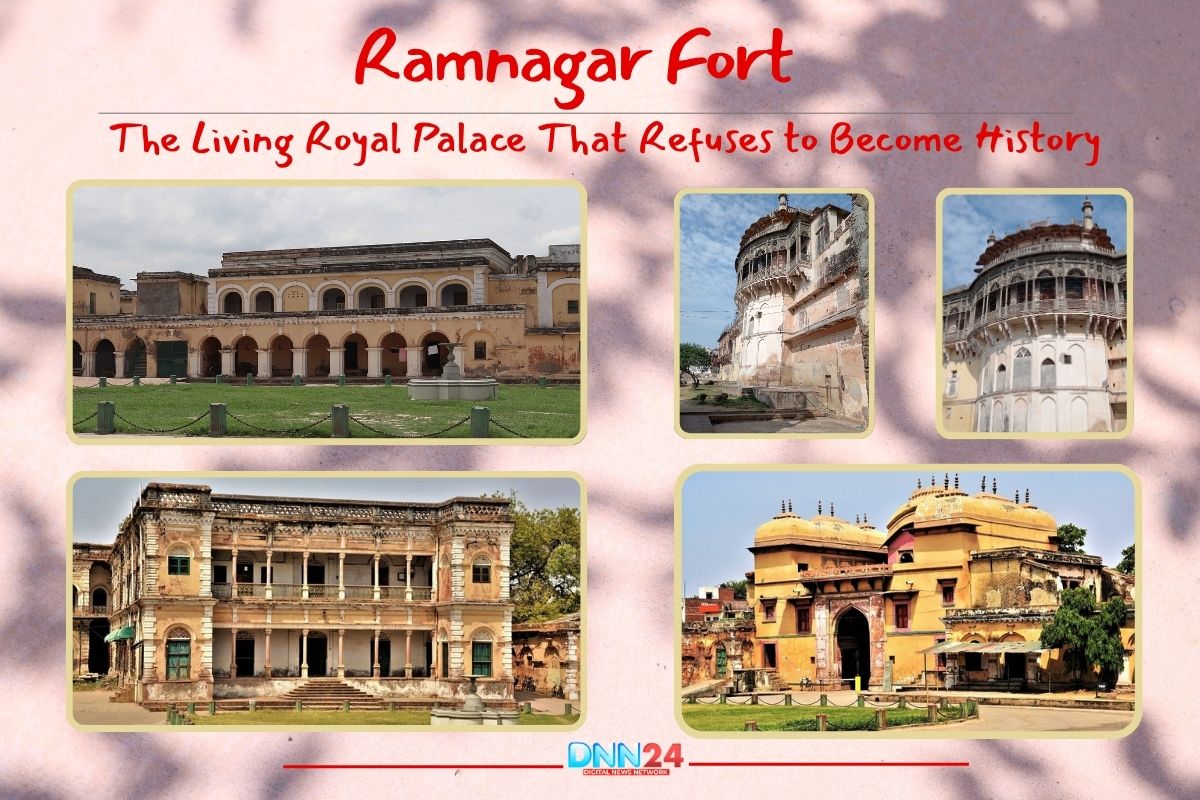On the eastern banks of the Ganges, where the sacred river curves past ancient ghats and temple spires, stands a fortress that performs a remarkable feat. Ramnagar Fort does not sit empty like most historical monuments. It breathes. The royal family still lives within its sandstone walls, maintaining rituals that stretch back centuries. Built in 1750 by Maharaja Balwant Singh, this palace has survived floods, battles, and the passage of empires.
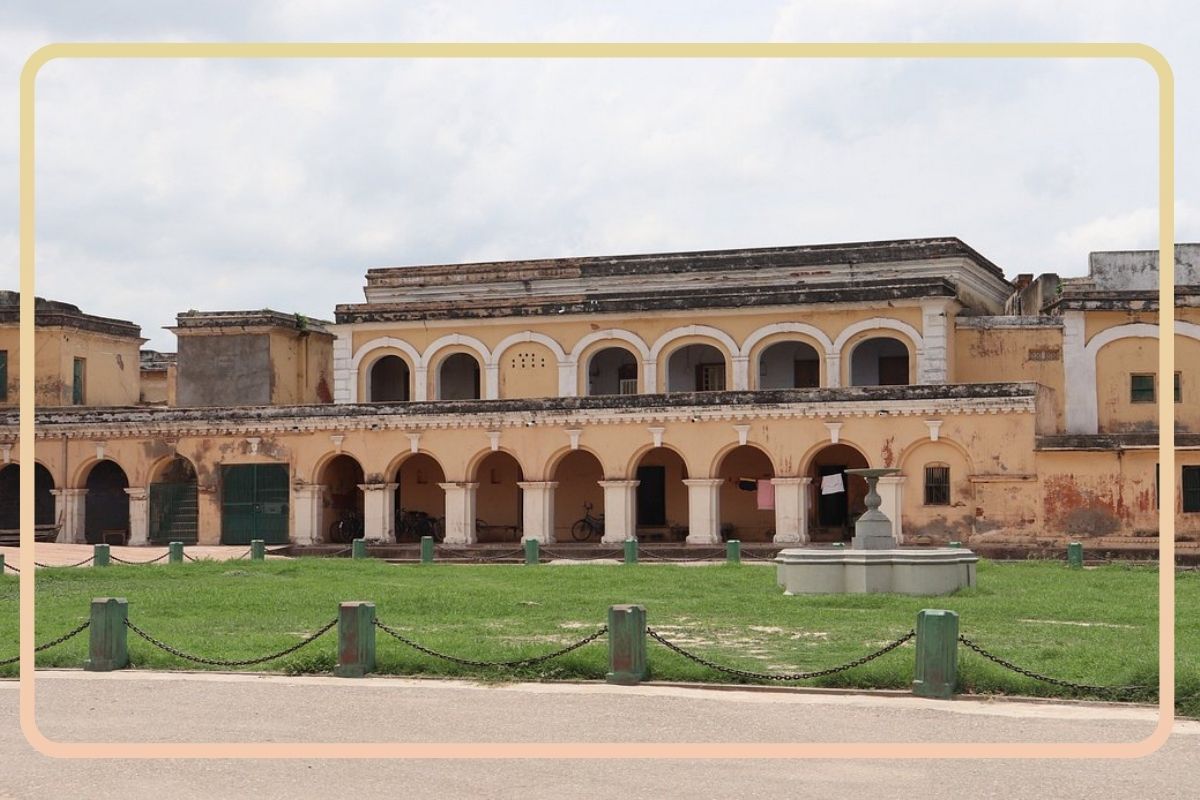
Today, it serves as both a residence and a repository of memory, housing artefacts that tell stories of power, devotion, and artistic achievement. The fort connects the spiritual heart of Varanasi with its political history, creating a bridge between the religious pilgrimage city and the princely state it once was. Walking through its gates means entering a place where history has never stopped unfolding, where the past and present coexist in the same rooms and courtyards.
Ramnagar Fort: The Making of a Royal Stronghold
Maharaja Balwant Singh chose this site with deliberate care. Varanasi had long been known as Kashi, a city sacred to Hindus, drawing pilgrims and scholars from across the subcontinent. The Maharaja sought a residence that reflected both the city’s spiritual significance and his own political aspirations. He ordered the fort constructed from Chunar sandstone, a material prized for its warm colour and durability. The location sat above the flood line, protecting it from the Ganges during the monsoon season. This was not merely a defensive position. It was a statement of permanence and authority.
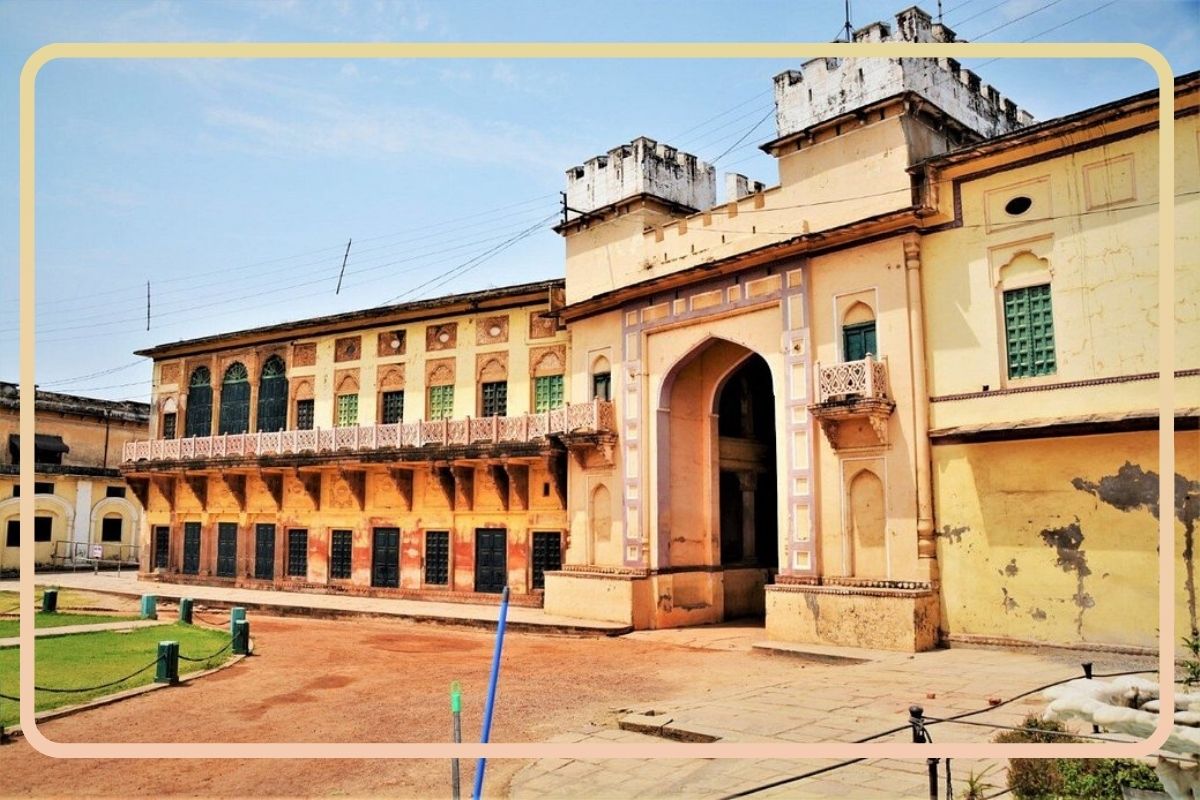
The fort became the seat of the Benares kingdom, where the Maharaja administered justice and received visitors from distant regions. The name Ramnagar itself carries religious weight, linking the fortress to Lord Rama and embedding it within Hindu mythology. This connection gave the royal family spiritual legitimacy alongside their temporal power. The fort was designed to serve multiple purposes simultaneously: as a residence, a court, a defensive structure, and a symbol of authority. Parts of the complex actually predate Balwant Singh’s construction. Inscriptions indicate that certain sections of the structure were built in the 17th century.
According to tradition, the sage Ved Vyasa meditated at this location while composing the Mahabharata. A temple dedicated to him stands within the fort grounds, marking this connection to ancient wisdom. The site witnessed major historical events. During the Battle of Buxar in 1764, the fort stood as a regional power struggling against the expanding British East India Company. In 1857, during the great uprising against British rule, the fort played a significant role in regional resistance once again. These events left their marks, physical and otherwise, creating layers of meaning within the structure.
Ramnagar Fort: Sandstone Elegance Meets Practical Design
The fort presents a distinctive appearance from the river. Creamy yellow Chunar sandstone gives the walls their characteristic glow, especially striking at dawn and dusk. The architecture combines influences from Mughal and Rajput traditions, creating a style that feels both refined and solid. Carved balconies extend from upper stories, allowing air to circulate while providing views of the river and surrounding countryside. The courtyards are spacious, designed for both public gatherings and private reflection. Pavilions with ornate columns offer shaded spaces for conversation and rest.
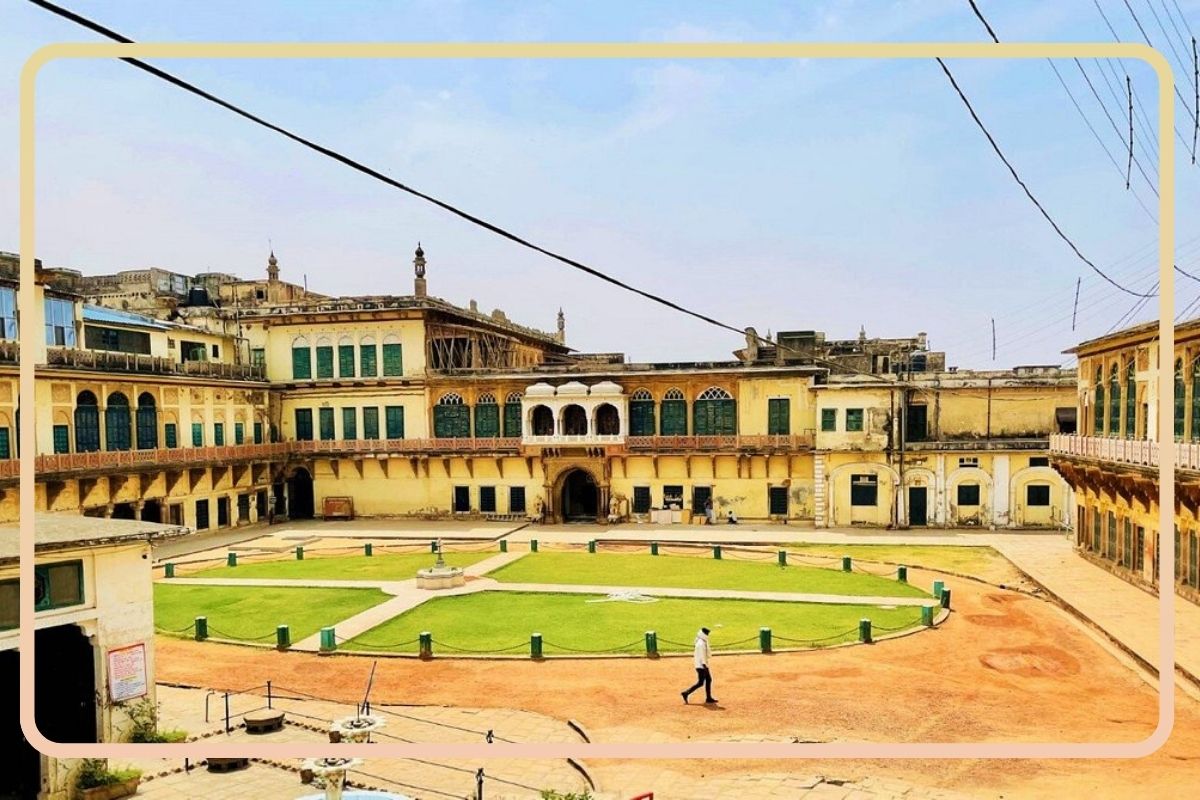
Two white towers rise above the rest of the structure, serving as landmarks visible from a considerable distance. The towers were both decorative and functional, allowing guards to watch for approaching visitors or potential threats. The fort complex includes several temples. The Durga temple and Dakshin Mukhi Hanuman temple demonstrate how religious observance was woven into daily palace life. These were not separate from royal function but integral to it. The Durbar Hall served as the centre of political activity. Here, the Maharaja held court, hearing petitions and making decisions. Today, this hall houses a museum displaying the royal collection.
Visitors can see antique swords with damascened blades, royal garments adorned with intricate embroidery, ivory carvings depicting mythological scenes, and a collection of vintage automobiles that once transported the royal family. One exciting item is an astronomical clock, a testament to the scientific interest of the medieval period. When the current Kashi Naresh is in residence, the royal flag flies from the towers, continuing a tradition that has been maintained without interruption since the fort’s founding. This detail matters because it shows the fort as something other than a preserved relic. It remains an active household.
Ramnagar Fort: A Heritage That Continues to Unfold
Ramnagar Fort has not become a museum piece, though it contains one. The current Kashi Naresh, Anant Narayan Singh, maintains his residence here while participating in the cultural and religious life of Varanasi. The fort reaches its fullest expression during the annual Ram Lila celebrations at Dussehra. For an entire month, the story of Lord Rama unfolds in theatrical performances staged across various locations, with the fort serving as the organisational centre.
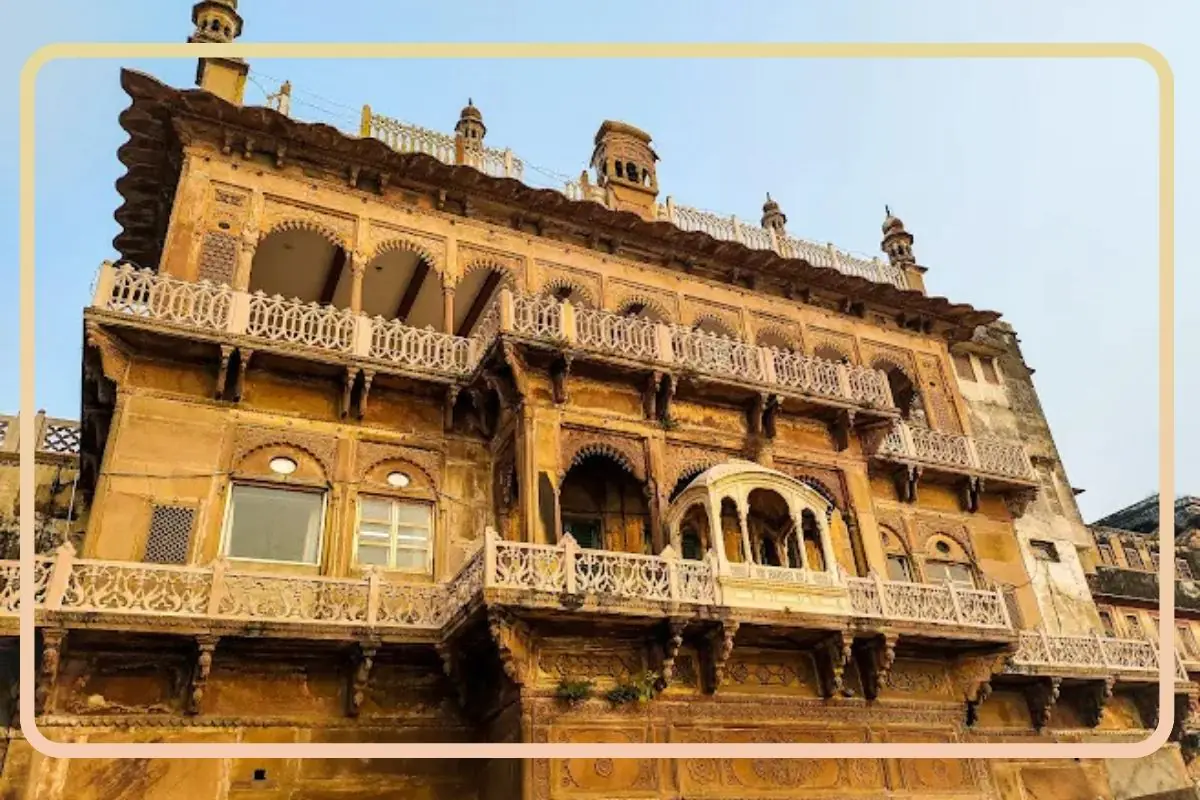
These performances draw enormous crowds, mixing devotion with entertainment in a tradition that predates cinema and television. The Ram Lila at Ramnagar is considered among the most authentic and elaborate in India, maintaining staging conventions and dramatic techniques that have been passed down through generations. Watching it provides insight into how stories were told and received before the advent of modern media.
The museum within the fort offers something different from typical historical collections. Because the royal family still lives here, the artefacts feel less like exhibits and more like family possessions temporarily on display. The collection includes items of genuine rarity, such as manuscripts, weapons, textiles, and decorative objects, which reveal the artistic sophistication and political connections of the Benares court. The fort also serves as the departure point for river cruises, connecting it to contemporary tourism while maintaining its historical character.

Visitors can board boats here and travel downriver past the famous ghats where pilgrims bathe and cremations take place, seeing Varanasi from the perspective its rulers once enjoyed. Beyond its role as attraction and residence, the fort represents something about how communities relate to their past. Varanasi could have allowed the fort to decay or converted it entirely into a museum. Instead, the city has maintained the royal family’s presence, preserving not just buildings and objects but living traditions and social relationships. This choice reflects values about continuity and respect for heritage that shape Varanasi’s self-understanding.
Ramnagar Fort: Where Time Refuses to Stand Still
Ramnagar Fort remains what it has always been: a place where multiple purposes intersect. It is a home, a monument, a museum, a religious site, and a cultural venue. The stones remember battles and ceremonies, construction and renovation, floods and droughts. But the fort is not trapped in memory. It participates in the present, hosting events, welcoming visitors, and serving as a residence for the royal family, whose lineage traces back through centuries. Standing on the fort’s ramparts, looking across the Ganges toward the dense cityscape of Varanasi, the view encompasses both permanence and change.

The river follows the same course it has for millennia, yet the city constantly transforms. The fort occupies this same position, rooted in history while remaining part of contemporary life. Every visitor encounters the fort differently depending on what they bring to it. For some, it represents an architectural achievement. For others, it connects to religious devotion or historical curiosity. Some come for the museum collection, others for the Ram Lila performances.
The fort accommodates all these perspectives without being reduced to any single one. This quality makes Ramnagar Fort more than a tourist destination. It is a working example of how history can remain vital rather than becoming merely preserved. The fortress has refused to become a relic; instead, it insists on maintaining its relevance. In doing so, it offers a model for thinking about heritage not as something finished and static but as something carried forward and reinterpreted by each generation.
Also Read: Tomb of Sher Shah Suri: An Emperor’s Dream Palace Floating On Water
You can connect with DNN24 on Facebook, Twitter, and Instagram and subscribe to our YouTube channel.

